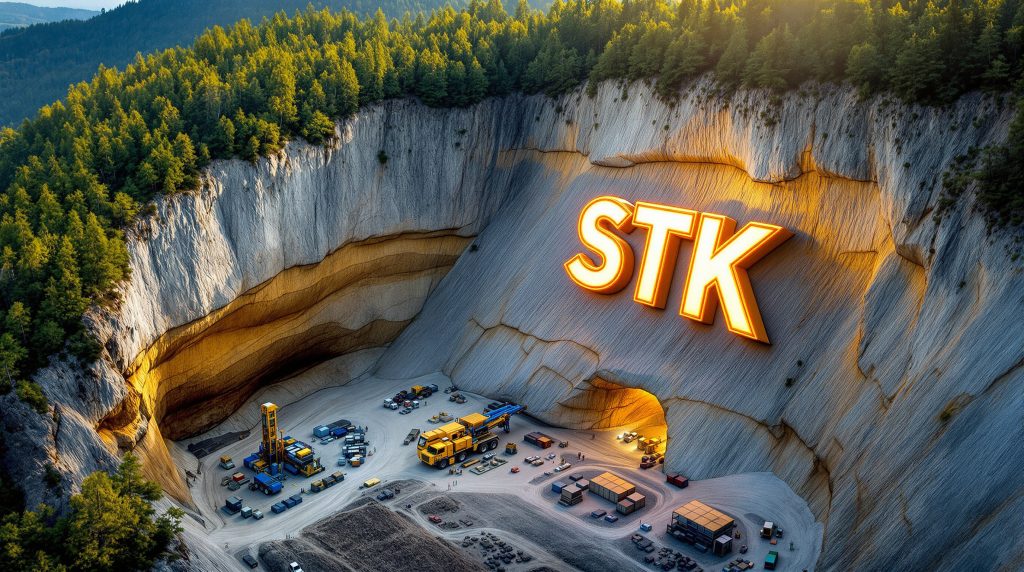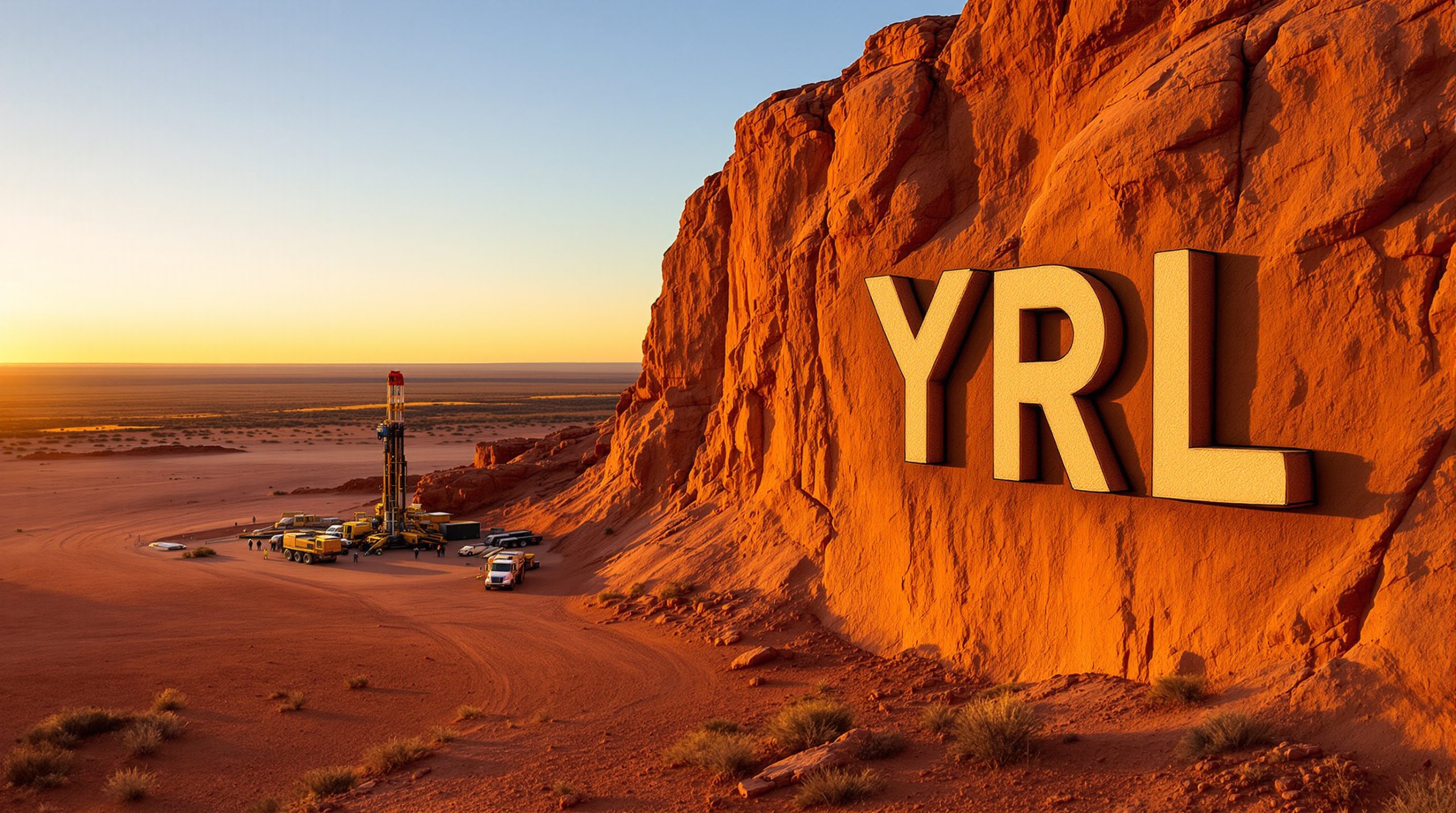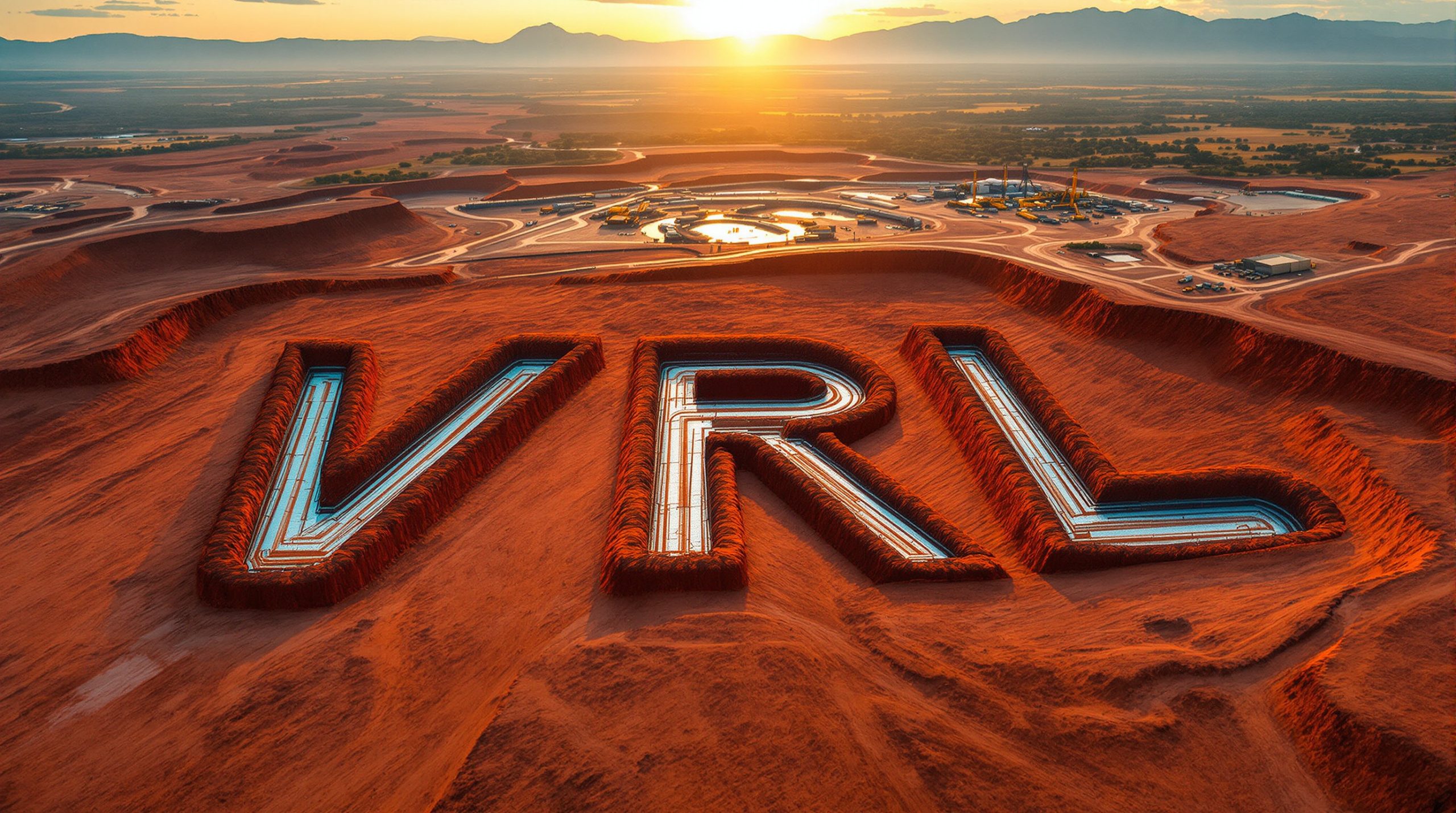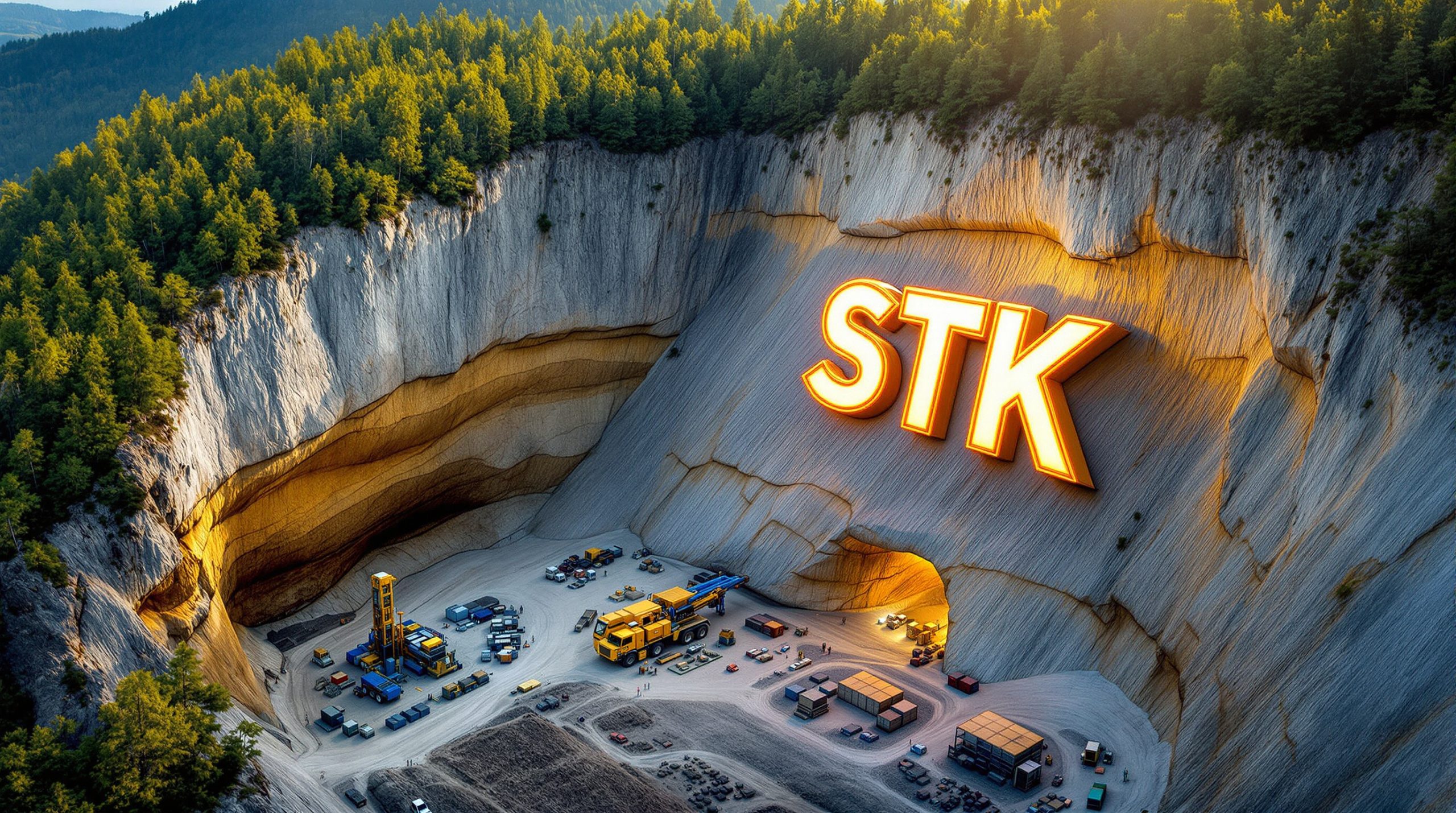High-Grade Gold Discovery Continues to Shine at Strickland's Rogozna Project
Strickland Metals (ASX: STK) has reported impressive new drilling results from its Gradina Deposit, part of the company's 100%-owned Rogozna Gold and Base Metals Project in Serbia. The latest diamond drilling intersections showcase multiple thick, high-grade gold zones that reinforce the significant potential of this emerging deposit.
Multiple High-Grade Gold Hits Expand Deposit Footprint
The latest drilling results from the southern part of Gradina include several standout intercepts that demonstrate both the thickness and high-grade nature of gold mineralisation in the deposit:
-
Hole ZRSD25208 returned an impressive 39.9m at 4.2g/t gold from 539.6m, including a high-grade zone of 12.0m at 8.2g/t gold and an exceptional 2.0m at 30.1g/t gold
-
Hole ZRSD25207 delivered 22.3m at 4.4g/t gold with associated lead, zinc, and silver mineralisation (0.5% Pb, 0.5% Zn, 21.5g/t Ag)
-
Hole ZRSD25210 intersected a broad 167.0m at 0.5g/t gold from just 97.1m downhole with associated copper, lead, zinc, and silver mineralisation, including higher-grade internal zones of:
- 21.0m at 2.3g/t gold with silver credits of 26.8g/t
- 5.1m at 5.3g/t gold from 428.2m
The intercept in hole ZRSD25210 starting at 97.1m downhole represents some of the shallowest mineralisation encountered at Gradina to date, with mineralisation remaining open up-dip toward the surface. This finding has significant implications for the potential economics of the deposit.
"These latest results from the southern end of Gradina build on the strong intercepts reported on 30 September. They include some wide, high-grade gold intercepts with individual zones assaying up to 30.1g/t Au, highlighting the significant tenor of the higher-grade mineralisation in this deposit," commented Paul L'Herpiniere, Strickland's Managing Director.
Mineralogy Showing Strong Gold and Base Metal Associations
The high-grade gold mineralisation encountered in the recent drilling shows varying mineral assemblages:
- In hole ZRSD25207, gold is associated with sulphide assemblages dominated by pyrite, sphalerite, and galena, with lesser amounts of pyrrhotite and chalcopyrite
- In hole ZRSD25208, high-grade mineralisation is dominated by pyrite and arsenopyrite
- In hole ZRSD25210, mineralisation is characterised by pyrite and sphalerite
The highest-grade mineralisation appears spatially associated with the margins of quartz diorite intrusions. Importantly, mineralisation at Gradina remains open in all directions, including up-dip toward the surface, pointing to significant expansion potential.
Understanding Skarn Deposits and Gold Mineralisation
The Rogozna Project represents a large-scale magmatic hydrothermal system hosting skarn-based gold-copper mineralisation with zinc, silver, and lead credits. Skarn deposits typically form at the contact between intrusive igneous rocks and reactive rocks like limestones, creating conditions favourable for metal deposition.
What are Skarn Deposits?
Skarn deposits are mineral deposits formed through a process called metasomatism, where the chemical composition of rocks is altered by interaction with hydrothermal fluids. These deposits typically form at the contact zone between intrusive igneous rocks (like diorites or granites) and carbonate rocks (like limestone).
When hot magmatic fluids rich in metals encounter carbonate rocks, a chemical reaction occurs that transforms the original rock and precipitates various minerals. This process can create economically valuable concentrations of metals including gold, copper, lead, zinc, and silver.
At Rogozna, the mineralogy indicates a well-developed skarn system with most of the mineralisation associated with retrograde skarn development in spatial association with quartz latite dykes. The presence of high-grade gold within this system makes Rogozna particularly attractive as an exploration target, especially as gold grades above 3g/t are considered high-grade in large-scale mining operations.
Key Characteristics of the Gradina Deposit
The mineralogy at Gradina shows classic skarn-type associations with:
- Gold mineralisation primarily associated with sulphide minerals
- Variable sulphide assemblages including pyrite, arsenopyrite, sphalerite, galena, pyrrhotite and chalcopyrite
- Spatial relationship between high-grade zones and intrusive contacts
- Broad halos of lower-grade mineralisation surrounding higher-grade zones
The recent drilling at Gradina suggests the deposit features both high-grade gold zones that could support selective mining scenarios and broader, lower-grade mineralisation that might be amenable to bulk mining methods.
Accelerating Toward Resource Definition
Strickland continues to advance exploration activities at Rogozna with seven diamond drilling rigs currently operating across the project:
- Three rigs dedicated to drilling at the southern end of Gradina to support a maiden Mineral Resource Estimate
- One rig operating at the Shanac Deposit
- Three rigs focused on discovery drilling across the broader project area
The company remains on track to deliver a maiden Mineral Resource Estimate for Gradina by late 2025, which will add to the already substantial resource base at Rogozna.
Rogozna Project's Growing Resource Base
The Rogozna Project already boasts an impressive inferred mineral resource of 7.4 million ounces of gold equivalent, comprising:
- Medenovac: 21Mt at 1.9g/t AuEq for 1.28Moz AuEq
- Shanac: 150Mt at 1.1g/t AuEq for 5.30Moz AuEq
- Copper Canyon: 28Mt at 0.9g/t AuEq for 0.81Moz AuEq
With three deposits already defined and Gradina showing potential to add significantly to the resource base, Rogozna is emerging as one of the most substantial gold and base metal projects in the European region.
Strong Financial Position Supports Continued Exploration
Strickland remains well-funded to pursue its aggressive exploration program, with cash and liquids totalling $52.4 million as of June 30, 2025. This strong financial position enables the company to maintain its intensive drilling campaign with multiple rigs operating simultaneously.
Why Investors Should Track Strickland Metals
Strickland Metals presents a compelling investment case for several reasons:
-
Significant resource growth potential: With a current 7.4Moz AuEq resource base and Gradina showing potential to add substantially to this inventory
-
High-grade gold intersections: The consistent high-grade gold results being encountered at Gradina enhance the economic potential of the Rogozna Project
-
Strategic European location: The project is located in Serbia, providing access to European infrastructure and markets
-
Strong cash position: $52.4 million in cash and liquids provides runway for continued aggressive exploration
-
Multiple near-term catalysts: The pending maiden resource estimate for Gradina by late 2025 represents a significant potential value driver
As drilling continues at Rogozna with multiple rigs in operation, investors can expect a steady flow of news regarding assay results and resource updates throughout 2025. With mineralisation remaining open in all directions at Gradina, including up-dip toward the surface, there appears to be significant potential for further resource growth at this emerging deposit within Strickland's flagship Rogozna Project.
Want to Tap into Serbia's Next Major Gold Discovery?
For investors seeking exposure to a rapidly advancing European gold project with exceptional high-grade results, Strickland Metals (ASX: STK) offers compelling opportunity. With 7.4 million ounces of gold equivalent already defined and impressive new intercepts including 39.9m at 4.2g/t gold at the Gradina Deposit, the company's Rogozna Project continues to demonstrate significant resource expansion potential. To learn more about this emerging gold story and stay updated on Strickland's progress toward its maiden resource at Gradina, visit Strickland Metals' website today.




